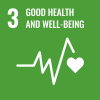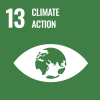Eastern Uganda, 29 August 2022 – Yusuf Munyifa was asleep when he received a phone call from a friend to tell him that his shop had been washed away, following torrential rains that pounded the town of Mbale in eastern Uganda.
“The water was [a lot] and it came from the hills at a very high speed. It uprooted trees and whatever it found, and carried them downhill, knocking everything else, including my shop.”
Two rivers burst their banks after heavy rainfall and led to severe flooding, leaving home, shops and roads submerged and other infrastructure destroyed. In the end, at least 26 people were killed. The flooding took place in Mbale and surrounding districts, some 220 kilometers east of the capital, Kampala.
Following torrential rains that pounded the area, parts of Eastern Uganda experienced floods and landslides, specifically the districts around the Mt. Elgon region including Mbale, Kapchorwa, Bulambuli, Namisindwa, Sironko, Manafwa and the surrounding areas.
“I’ve lost over 35,000 dollars’ worth of stock. I’m completely devastated. I have four children to feed. I have never seen anything like this in my life happen in our community,” he adds.
The Uganda Red Cross estimates that over 4,000 homes have been affected, and thousands displaced by the floods. Flood-induced landslides and mudslides are wreaking havoc in the region.
The Uganda National Meteorological Authority is predicting more rains and flooding in the Teso region, 102 miles away from the Mbale tragedy in the coming weeks.
“We are carrying out assessments and the likelihood of more floods. We are having to close schools at risk because of large cracks in the earth that are appearing,” said Christine Namwau, Disaster Management Committee in Bulambuli District, in the eastern region.
Last year flooding, landslides and hailstorms in Eastern, Central and Western Uganda affected over 40,000 people, with over 3,600 displaced and forced to live in temporary shelters.
In 2010, the country had to relocate and resettle more than 3,000 people from the Mt. Elgon sub-region, Bududa district in eastern Uganda and Kiryandongo district in western Uganda, since their villages were devastated by landslides in March 2010.

Structures flooded on the banks of River Nabuyonga after the floods in Mbale, eastern Uganda. Courtesy photo
Historically, Uganda has been characterized by stable rainfall patterns; however, the global effects of climate change that have resulted in the frequency and magnitude of disasters and weather-related hazards have not spared the country and a region that has been experiencing shorter or longer rains, and even drought.
In 2021 alone, there were 23.7 million internal displacements resulting from weather-related events, including floods, storms and cyclones. With the expected impacts of climate change and without ambitious climate action, the numbers will likely increase in the coming years.
“People have constructed and cultivated right up to the riverbanks, and these were the most affected. Wetlands have been encroached on and that is a problem because when wetlands are intact, they at least help to control the pace of the water when it rains heavily,” said Teddy Nabukwasi, Environmental Officer in Siroko District, also in the eastern region. “We need to constantly sensitize people so that they know the effects of their actions on the environment.”
Nabukwasi and other government officials have recently been trained by the International Organization for Migration (IOM) in Uganda on disaster preparedness, response and reporting through a European Union-funded project. IOM is also working with the Red Cross to aggregate and share emergency data and will be part of a joint assessment by the government, the United Nations and other aid agencies.
“In the immediate term, IOM will provide a range of non-food relief items to support the affected people, while fundraising for more support,” said Sanusi Tejan Savage, IOM Chief of Mission in Uganda.
The flooding in Uganda comes against the backdrop of a new and historic Declaration on Migration, Climate Change and Environment endorsed by presidents and ministers from the East and Horn Africa, in Kampala, Uganda: the Kampala Ministerial Declaration on Migration, Environment and Climate Change, that aimed at bringing nations across the East and Horn of Africa region together to prioritize, respond to and galvanize global support to deal with the harsh impact of climate change on human mobility.
“Our people, the majority of whom are already vulnerable and have limited capacity to adapt to the impacts of climate change, have continued to experience increased frequency and intensity of floods, droughts and landslides associated with impacts of climate change.”
The newly signed Declaration is an urgent call for the world to respond to the impact of climate change on human mobility across the region and continent, and support affected communities, who are among the world’s most vulnerable, to adapt to climate change realities.
A report by the World Bank predicts that some 86 million people in Africa might be forced to migrate within their own countries by 2050 due to climate change if no concrete climate and development action is taken.
The Horn of Africa region is expected to be severely affected by the effects of climate change, including severe droughts and flash floods. Weather-related disasters are leaving local communities to become more vulnerable, eroding their coping strategies and, with it, displacement.
IOM is committed to translating the mobility dimensions of reducing disaster risk into concrete actions to ensure the safety and protection of migrants and displaced persons everywhere. IOM calls on all governments and parties to adopt the Intergovernmental Panel on Climate Change's (IPCC) vision to move from climate risk to climate-resilient development in order to address disaster risk reduction in the face of climate change.
Written by Richard M Kavuma, Public Information Officer, IOM Kampala



